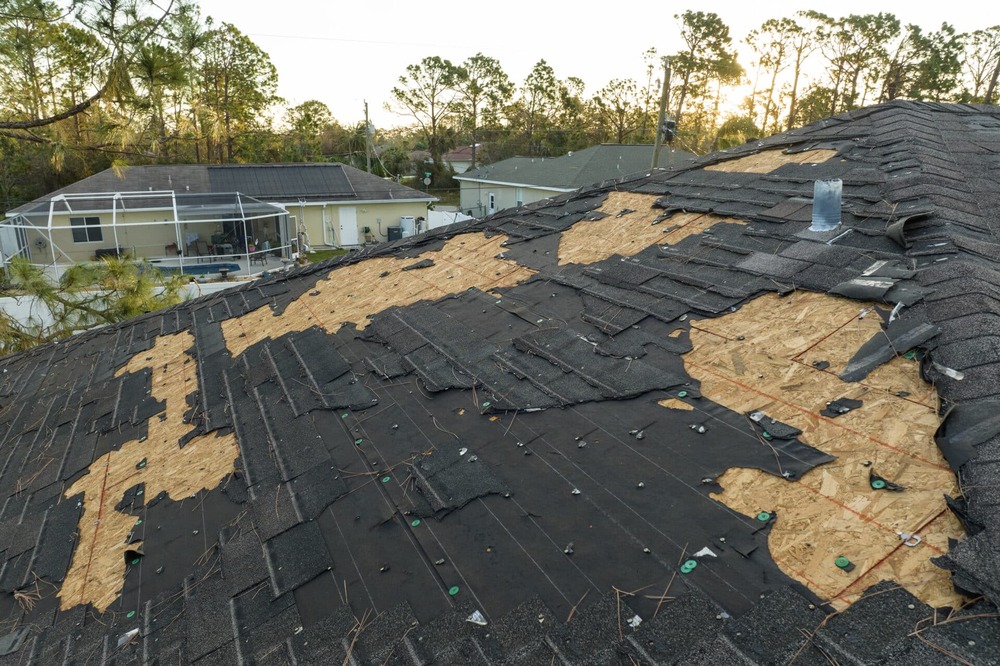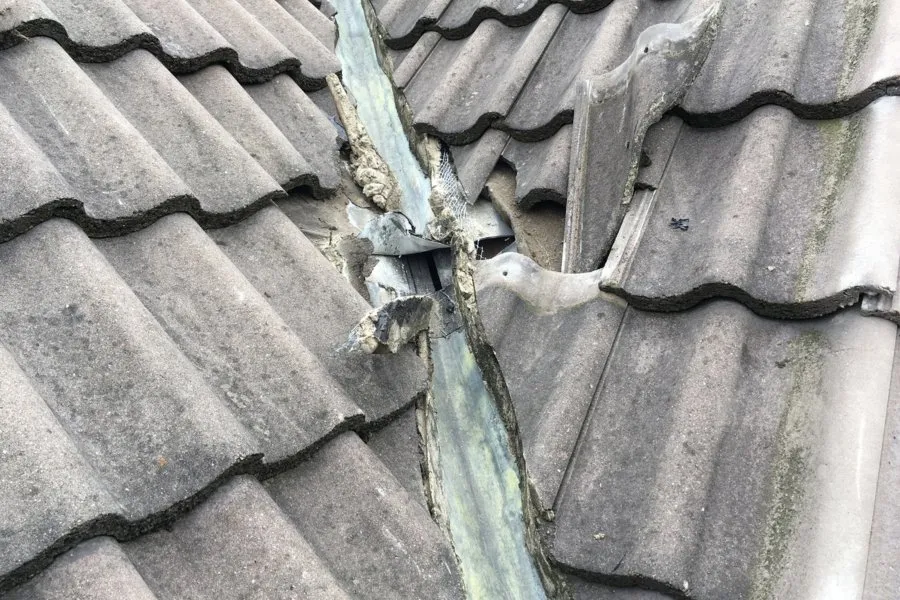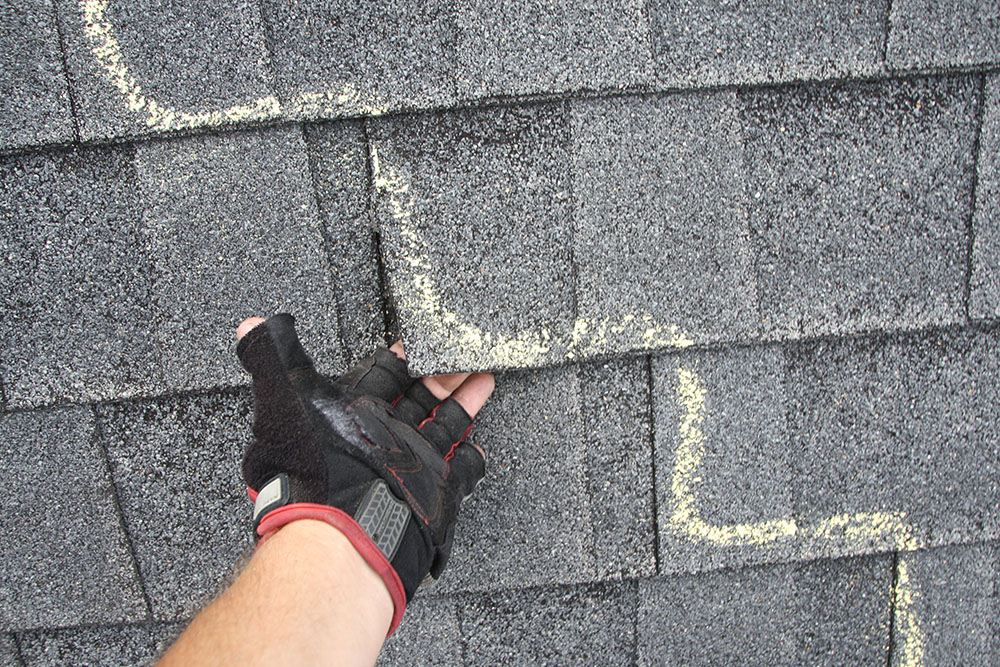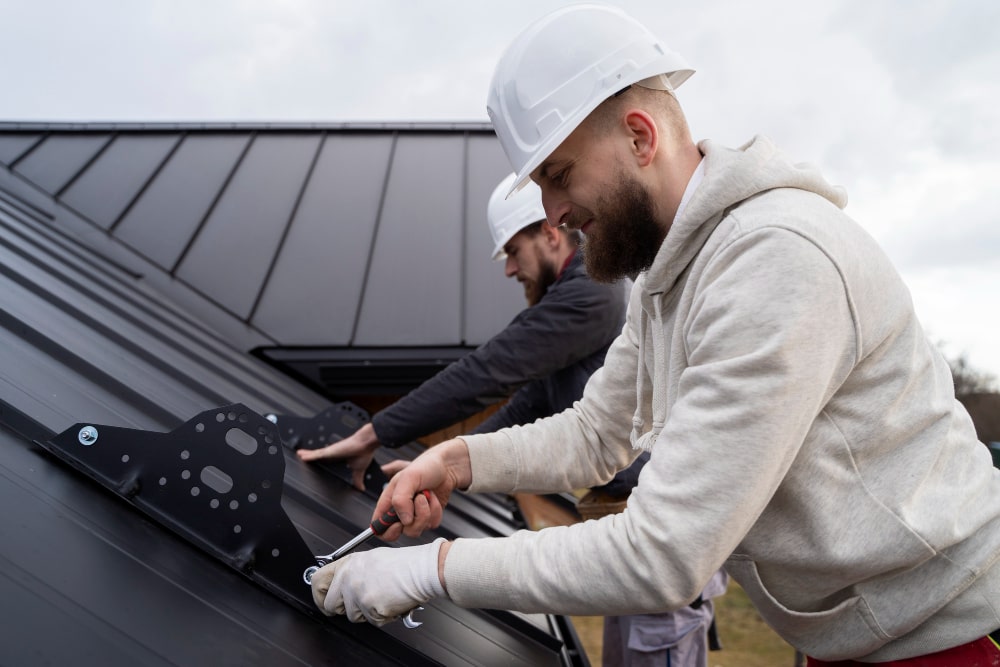- Free Estimates

Hidden roof damage is a serious issue that often goes unnoticed until it leads to major repairs. Many problem areas are concealed beneath shingles, flashing, or structural components, making it difficult for the average person to detect. Professional roofers have the skills and tools to uncover these hidden issues before they worsen. By inspecting overlooked spots like roof valleys, skylights, and attic spaces, roofers can identify damage early and prevent costly repairs.
Here are seven unexpected places roofers find hidden damage.
Key Takeaways✔ Roof valleys often conceal damage due to water accumulation, debris buildup, and worn flashing. ✔ Skylights can hide damage caused by deteriorating seals, framing gaps, and trapped condensation. ✔ Chimney flashing can mask embedded cracks, hidden rust, and deteriorating mortar joints. ✔ Attic insulation and rafters can disguise moisture issues, mold growth, and structural deterioration. ✔ Fascia and soffits often conceal water damage, cracks, and ventilation blockages. ✔ Damage beneath roof shingles can remain hidden due to torn underlayment, trapped moisture, and nail penetration issues. ✔ Roof decking can hide damage caused by subsurface leaks, moisture-induced warping, and plywood delamination. |

Roof valleys are where two sloping sections of a roof meet, creating a low point for water to flow. While these areas are essential for proper drainage, they are also prone to hidden damage. Roofers often discover leaks and deterioration in valleys that can lead to bigger problems if left unchecked.
Skylights brighten interior spaces but can be sources of hidden damage. Leaks and deterioration often occur around the edges where seals and flashing are installed. Roofers frequently uncover issues that are concealed beneath or around these features.
Chimneys rely on flashing to prevent water from seeping where the chimney meets the roof. However, hidden damage often lurks beneath this flashing. Roofers frequently find leaks and deterioration that are not obvious at first glance.
Hidden damage in the attic can be caused by leaks that go unnoticed for months. Attic insulation and rafters can conceal moisture issues and structural deterioration. Roofers often uncover these problems during thorough inspections.
Fascia and soffits are essential for ventilation and protecting the roof’s edge. However, they can conceal hidden damage caused by leaks or poor drainage. Roofers often find rot, moisture buildup, and pest issues in these areas.

While shingles protect the roof surface, damage can hide beneath them. Even if shingles appear intact, the layers underneath can suffer from leaks or deterioration. Roofers often lift shingles to find hidden issues.
Roof decking forms the foundation for shingles and underlayment. It is typically made of plywood or OSB (oriented strand board) and supports the entire roofing structure. Hidden damage in the decking can lead to major issues, often remaining unnoticed until roofers conduct a thorough inspection.
The global roofing market is valued at $82.2 billion in 2023, emphasizing its massive importance to homeowners. As such, choosing the right roofers to inspect for hidden damage is critical for maintaining a durable and safe roof. Not all roofers are equipped with the skills and tools to uncover concealed problems. The right professionals ensure thorough inspections, accurate assessments, and effective solutions. Here are key factors to consider when selecting roofers for hidden damage inspections.
Professional roofers with proper certifications demonstrate their expertise and commitment to quality work. Look for credentials from organizations like the National Roofing Contractors Association (NRCA) or local licensing boards. Certified roofers follow industry standards and best practices, ensuring they can identify hidden damage accurately. Verifying these credentials guarantees that the inspection is handled by qualified professionals.
Different roofers use different methods to detect hidden damage. Inquire whether they use tools like moisture meters, infrared cameras, or drones for detailed inspections. Advanced techniques allow roofers to identify problems that aren’t visible to the naked eye. A thorough understanding of their inspection process helps ensure no damage is overlooked.
Roofers with experience working on the same type of roof material are more likely to spot hidden damage specific to that material. Whether the roof is made of asphalt shingles, metal, tile, or slate, experienced roofers understand where and why damage occurs. Their familiarity helps them recognize subtle signs of deterioration that less experienced contractors might miss.
Customer reviews and references provide insight into the roofer’s reliability and quality of work. Look for reviews that mention thorough inspections, accurate damage detection, and effective repairs. Asking for references from previous clients can also confirm whether the roofers consistently find and repair hidden damage. Positive feedback is a strong indicator of dependable service.
5. Ensure Detailed Reports and Clear Communication
Roofers who provide comprehensive inspection reports with photos and explanations offer transparency and clarity. These detailed reports help property owners understand the extent of hidden damage and the necessary repairs. Clear communication ensures there are no surprises and allows for informed decision-making. Choosing roofers who prioritize detailed documentation ensures accountability and trustworthiness.

Regular maintenance is key to stopping roof damage before it becomes a costly issue, since most roofs last 30 years. Hidden damage can develop slowly, often out of sight, until it turns into a major repair. Professional roofers recommend several steps to keep the roof in good condition and prevent these concealed problems. Here are five practical ways to maintain a healthy roof and avoid hidden damage.
Routine inspections by roofers in the spring and fall help catch hidden damage early. Seasonal changes can cause shingles to crack, flashing to loosen, and moisture to seep into the structure. Professional roofers know where to look for subtle signs of deterioration that may not be obvious. Regular inspections can prevent minor issues from becoming expensive repairs.
Clogged gutters cause water to overflow, leading to damage on the fascia, soffits, and roof decking. Roofers recommend cleaning gutters at least twice a year to prevent blockages. When water cannot drain properly, it can seep into hidden areas and cause rot. Maintaining clear gutters ensures proper water flow and reduces the risk of hidden leaks.
Tree branches that hang over a roof can cause several problems, from physical damage to debris buildup. During storms, branches can scrape shingles or break off and puncture the roof. Roofers advise trimming branches to prevent leaves and twigs from accumulating, which can trap moisture and cause hidden rot. Keeping trees trimmed reduces potential damage and prolongs the roof’s lifespan.
Poor attic ventilation traps heat and moisture, leading to hidden damage like mold, rot, and warped decking. Roofers recommend ensuring that vents are clear and insulation is properly installed to maintain airflow. Good ventilation helps keep the roof structure dry and prevents damage caused by trapped moisture. Regular checks can help identify issues before they worsen.
Minor problems, such as a loose shingle, small crack, or rusted flashing, can lead to significant hidden damage if ignored. Roofers emphasize addressing these small repairs as soon as they are noticed. Quick fixes prevent water from seeping into the underlying layers and causing rot or structural damage. Prompt maintenance ensures the roof remains strong and durable.
When roof damage impacts insulation, one of the first signs is uneven indoor temperatures. Insulation that has absorbed moisture becomes less effective, causing rooms to feel drafty or unusually warm. Another indicator is higher energy bills due to the HVAC system working harder to regulate temperature. Roofers can assess the insulation to determine if moisture intrusion from hidden damage is the cause.
Yes, roof damage can create entry points for pests such as rodents, insects, and birds. Small holes, cracks in the soffits, or loose shingles provide easy access for pests looking for shelter. Once inside, pests can cause further damage to insulation, wiring, and wooden structures. Roofers can identify and seal these entry points during inspections to prevent infestations.
Extreme weather conditions like heavy rain, snow, hail, and strong winds can worsen hidden roof damage. Rain can exploit small leaks, snow can weigh down weak areas, and hail can cause cracks that aren’t immediately visible. Over time, temperature fluctuations can expand these weaknesses, leading to more severe damage. Roofers know how to spot weather-related issues before they become critical.
Yes, prolonged hidden roof damage can weaken the home’s structural components. Moisture can rot wooden beams, compromise roof decking, and lead to sagging or collapsing sections. Over time, this can affect walls, ceilings, and even the foundation. Roofers can identify early signs of structural damage and recommend immediate repairs to maintain the home’s safety.
The lifespan of a roof varies depending on the material, but most roofs need replacement every 20 to 30 years. Factors such as weather exposure, maintenance frequency, and the quality of materials can affect this timeline. If hidden damage is frequently found during inspections, it may indicate the roof is nearing the end of its lifespan. Consulting with professional roofers can help determine the best time for a full roof replacement.
Lyndsey Roofing, LLC in Hyde Park, NY, offers professional roofing services to protect and enhance any property. Our skilled roofers specialize in thorough inspections, timely repairs, and complete roof replacements, ensuring lasting results. With a commitment to quality craftsmanship and customer satisfaction, Lyndsey Roofing, LLC addresses hidden damage before it becomes a costly issue.
Contact us today to schedule an inspection and keep the roof in top condition.